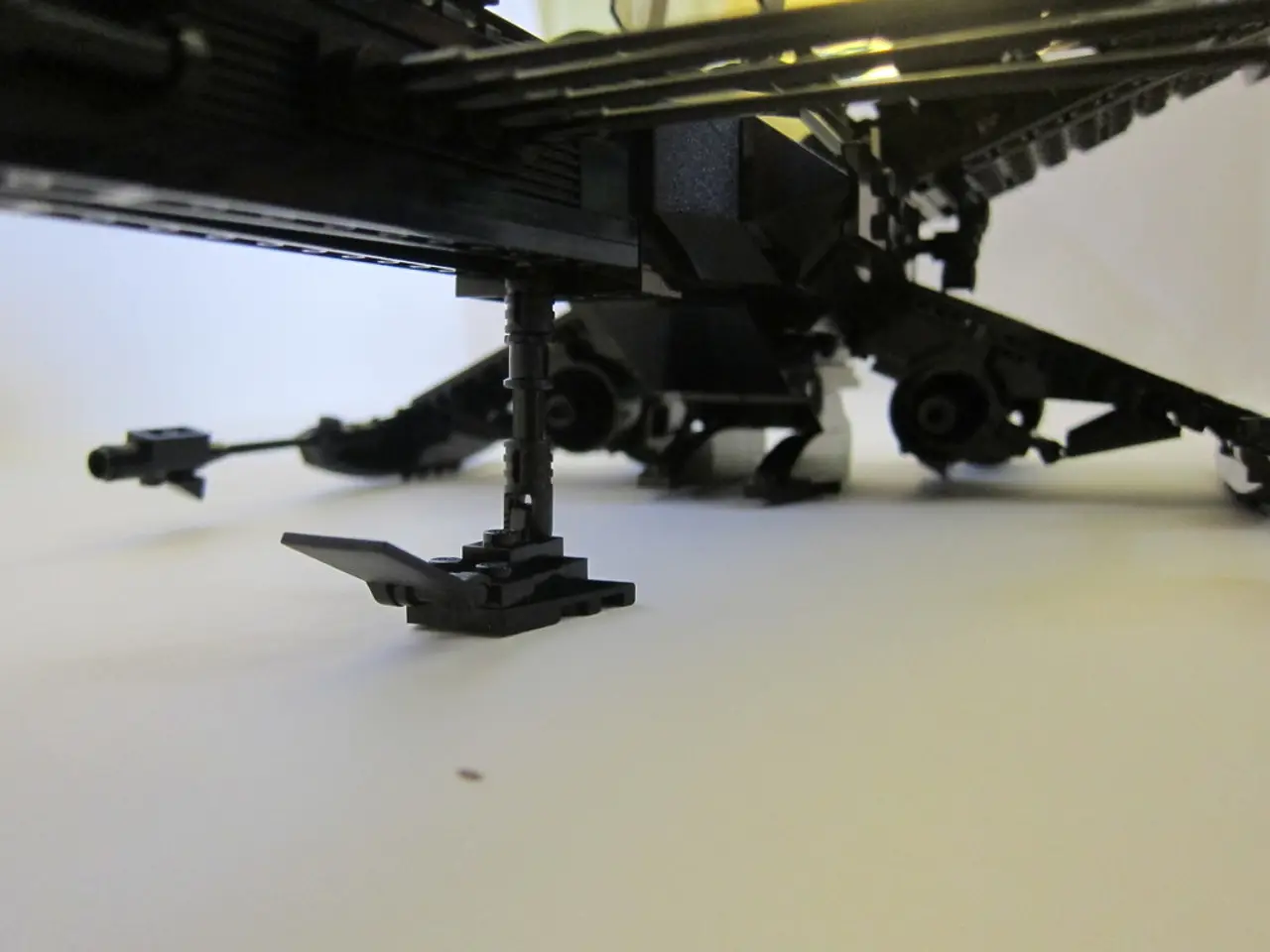US Drone Shot Down by Russia: Key Insights from the Capture of an American Unmanned Aerial Craft
The downing of a US MQ-9 Reaper by a Russian Su-27 fighter in international airspace over the Black Sea has raised concerns about the vulnerability of unmanned aerial systems (UAS) in large-scale combat operations.
At the start of the war, the Russian air force had one of the largest fleets of military aircraft in the world, but it has only been able to play a marginal role in the ground war. Despite this, Russia has lost at least 79 fixed-wing aircraft, 79 rotary-wing aircraft, 7 combat UAVs, and 194 reconnaissance UAVs during the conflict.
The MQ-9 Reaper, a critical asset for intelligence, surveillance, and reconnaissance (ISR) missions, was downed by Russian fighters. The evidence indicates that Russian fighters engaged in extremely aggressive flight near the UAV, but it is unclear if the collision was intentional or unintended. The Department of Defense released video evidence of the event, which appears to justify the US claim that Russian jets dumped fuel on the unmanned aerial vehicle (UAV) and then collided with the Reaper's propeller.
The incident underscores the increased vulnerability of UAS to aggressive kinetic actions by state actors, especially in contested or internationally sensitive zones. Key implications include escalation risks and rules of engagement complexity, operational vulnerability and airspace denial, legal and sovereignty challenges, and impact on ISR capabilities.
The ability of a fighter like the Su-27 to collide with and effectively down a MQ-9 indicates that unmanned systems operating in or near contested zones face credible threats from traditional fighter aircraft, necessitating enhanced survivability measures or escort strategies. The loss of a persistent, remotely piloted asset like the MQ-9 can temporarily degrade US ISR capacity in critical regions such as the Black Sea, highlighting the need for diversified platforms and redundancy.
The incident over international airspace raises complex questions about legal frameworks governing unmanned reconnaissance and surveillance, particularly relating to airspace sovereignty, freedom of navigation, and the threshold for hostile action. As drones like the MQ-9 are integral to modern military operations for real-time intelligence and strike missions, their susceptibility to air combat threats could drive accelerated development of countermeasure technologies including electronic warfare, drone swarm tactics, or more robust stealth designs.
Liam Collins, a retired Special Forces colonel and the founding director of a defense advisory website, emphasizes the need to learn from this incident and the lessons it foretells about unmanned platforms, strategic decision-making, and large-scale combat operations. He suggests that there should be a real debate about whether the US military should field more survivable UAVs or invest in smaller, less expensive ones that are acceptable to lose.
Historically, incidents involving shootdowns or interceptions of unmanned and manned reconnaissance platforms have often served as flashpoints that force reevaluation of engagement policies and force posture. The Black Sea collision thus reflects a broader strategic environment where unmanned platforms are critical but remain exposed, influencing doctrines for their deployment in large-scale combat.
It is worth noting that the views expressed by Liam Collins do not reflect the official position of the United States Military Academy, Department of the Army, or Department of Defense. The incident might have been a deliberate effort by Russia to distract from the fact that its air force has underperformed in the war.
[1] Rules of engagement and escalation risks: As kinetic engagements with drones may provoke rapid escalation, command decisions about proportional responses in contested airspace become more complex.
[2] Operational vulnerability and airspace denial: The ability of a fighter like the Su-27 to collide with and effectively down a MQ-9 indicates that unmanned systems operating in or near contested zones face credible threats from traditional fighter aircraft, necessitating enhanced survivability measures or escort strategies.
[3] Legal and sovereignty challenges: The incident over international airspace raises complex questions about legal frameworks governing unmanned reconnaissance and surveillance, particularly relating to airspace sovereignty, freedom of navigation, and the threshold for hostile action.
[4] Impact on ISR capabilities: The loss of a persistent, remotely piloted asset like the MQ-9 can temporarily degrade US ISR capacity in critical regions such as the Black Sea, highlighting the need for diversified platforms and redundancy.
- The downing of the US MQ-9 Reaper by a Russian Su-27 fighter in international airspace has underscored the complexities involved in rules of engagement, as kinetic engagements with drones may provoke rapid escalation, making command decisions about proportional responses in contested airspace more complex.
- The ability of a fighter like the Su-27 to collide with and effectively down a MQ-9 indicates that unmanned systems operating in or near contested zones face credible threats from traditional fighter aircraft, necessitating enhanced survivability measures or escort strategies.
- The incident over international airspace has raised complex questions about legal frameworks governing unmanned reconnaissance and surveillance, particularly relating to airspace sovereignty, freedom of navigation, and the threshold for hostile action.
- The loss of a persistent, remotely piloted asset like the MQ-9 can temporarily degrade US ISR capacity in critical regions such as the Black Sea, highlighting the need for diversified platforms and redundancy.
- In the context of urban warfare, the vulnerability of unmanned aerial systems (UAS) in large-scale combat operations has become a significant concern, given their critical role in intelligence, surveillance, and reconnaissance (ISR) missions.
- As drones like the MQ-9 are integral to modern military operations for real-time intelligence and strike missions, their susceptibility to air combat threats could drive accelerated development of countermeasure technologies including electronic warfare, drone swarm tactics, or more robust stealth designs.
- The general-news landscape and political discourse are increasingly focused on war-and-conflicts, with the aerospace and finance industries playing crucial roles in shaping defense strategies, and the ongoing incident reflecting the interplay between military operations, industry advancements, and international relations.








